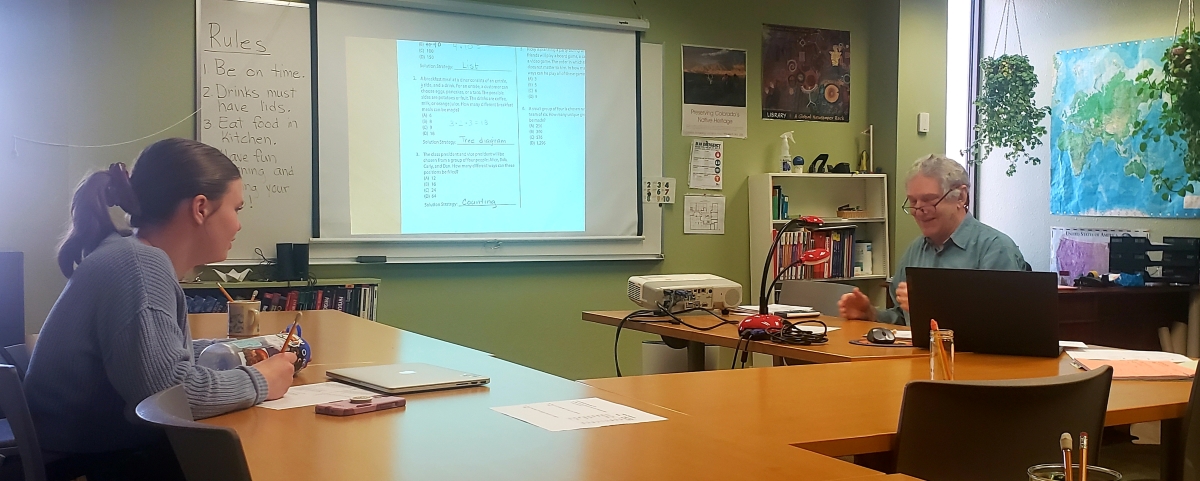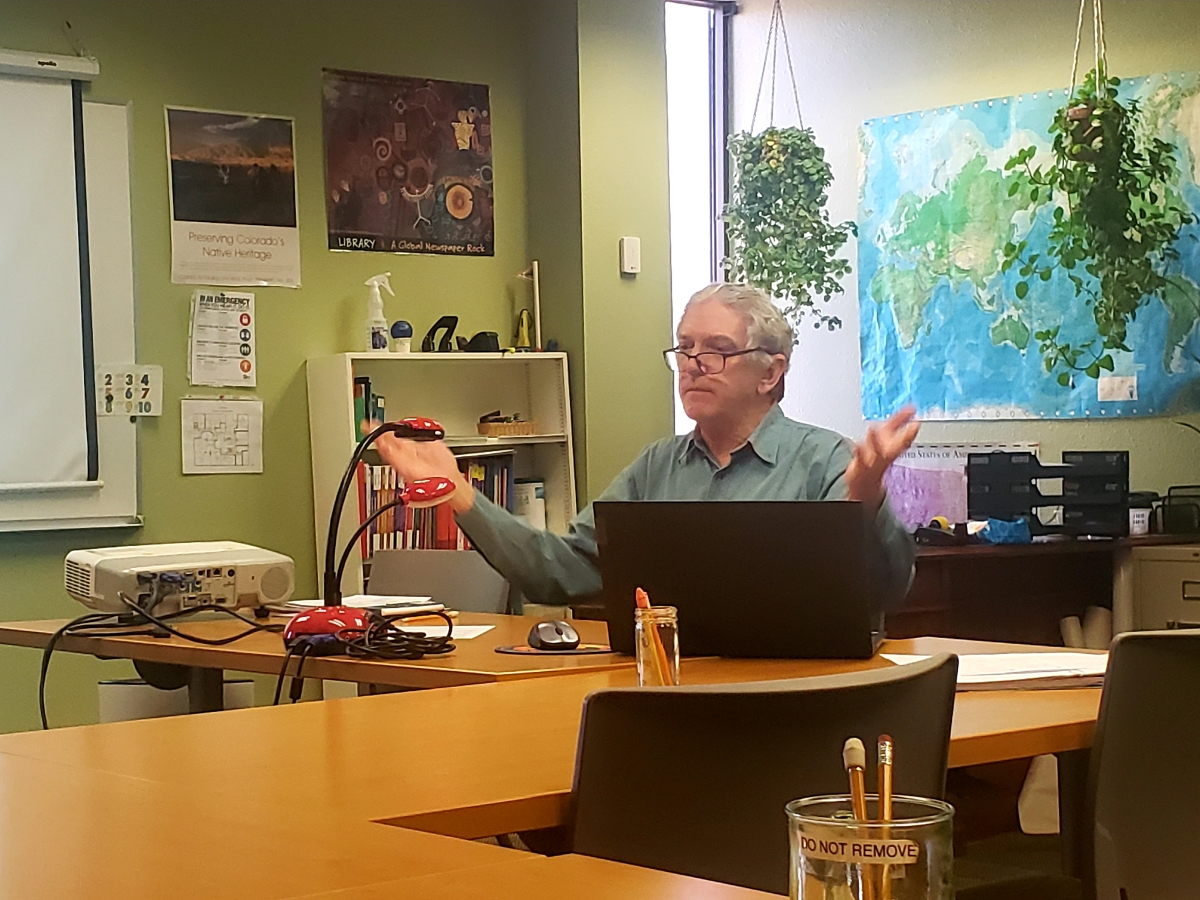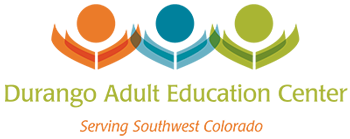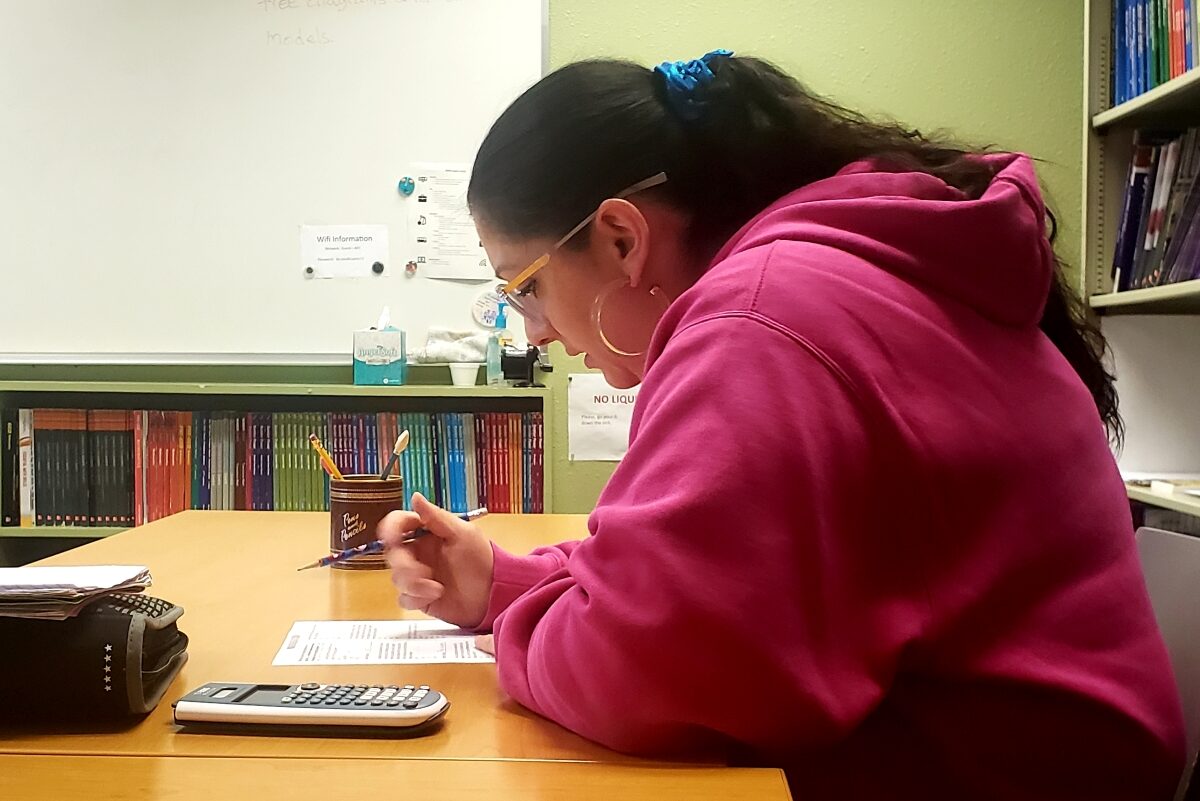Critical Thinking Skills Gained in the Classroom Serve Students for a Lifetime
Classroom Problems
Ben has taken nine tests. His scores so far have been: 98, 92, 97, 90, 86, 95, 82, 92, and 85. He will take one more test. To earn a scholarship, Ben must average a score of 90 on his tests. What must Ben score on the tenth test to receive the scholarship?
“Monica, what do you think we should do to solve this problem?” Mike Sneed, Math teacher at the Durango Adult Education Center, asks a student in his Monday morning class.
Monica is already punching figures into her calculator. “90.7!” she announces her answer. “I added up all the test scores and divided by nine.”
“Aha,” Mike muses. “That is absolutely right if you want to know what his average is right now. Ben is averaging a 90.7 on his tests. But is that what the question is asking?”
Maddy, another student, offers an uncertain answer. “It wants us to predict his last score?”
Mike nods. “And how do we do that?”
The students stare at their worksheets. Pencils tap tabletops as they think.
“Think about the last problem when we looked at elevations of different mountain peaks. This is the same kind of problem, only we have more numbers to work with.”
“The problems feel hard today,” Monica shakes her head.
“That’s okay,” Mike soothes her. “Math is like any skill. Take baking—I can’t bake well most of the time, but I do okay when I practice. Math needs practice, too.”
Real World Problems
Before coming to the Adult Education Center in Durango, Mike taught math to junior high students for 20 years. He knows math is hard not just because multiplication, addition, balancing equations, or factoring are skills that need to be practiced. It is hard because it forces a brain to practice critical thinking skills.
Generally speaking, critical thinking is the ability to think clearly and rationally. It is understanding the logical connections between ideas. Critical thinking teaches us to solve problems systematically rather than by instinct or intuition. It teaches us how to find errors or inconsistencies and how to assess an argument as valid or made of straw. Some sources suggest critical thinkers enjoy better interpersonal relationships because they are introspective and can adapt their views in order to accept others who are different from themselves.
At some point, every math classroom bears witness to the same frustrated complaint: I’m never going to use this in the real world!
Mike knows this is absolutely not the case. The critical thinking gained from studying math is the lynch pin of daily life. As he puts it, “Is it a better bargain to buy a full gallon of milk or a half gallon? If you’re supporting a family with three kids, how do you adapt the recipes you use to feed your family and not waste money buying more than you need?”

Mike Sneed (right) knows the problems Maddy (left) is solving only seem trivial in the classroom. Problem-solving is valuable asset in any career field.
Calculated Efforts
Inside the classroom, the students help each other find the solution to Ben’s scholarship dilemma.
“We know that if Ben took ten tests and scored a 90 on all of them, he’d average a 90,” Maddy says.
“That’s right!” Mike points at her as if to shine a spotlight on her thinking. “90 plus 90 plus 90 ten times equals 900. And 900 divided by 10 is an average of 90.”
“Oh!” Monica scoots to the edge of her chair. “We add up all of his scores so far and subtract that from 900?”
“Try it,” Mike says.
Buttons clack on calculators.
“Ben’s fine,” Monica announces. “He just needs an 83 on that last test.”
The class moves on to other problems. Students confront a combo menu offering three entrees, two drinks, and three sides. They are asked to figure out how many meal combinations could be made from this menu.
“What is one way to solve this problem?” Mike wonders aloud.
“We could list all the combos,” Maddy suggests.
“Yep, we could. And that could take a while. What if we need to find an answer faster?”

Monica studies each math question carefully. Gaining the full picture is only one part of critical thinking.
The classroom is silent for a few moments. Monica then asks, “Can’t we just multiple the options?”
“There ya go!” Mike points his magical spotlight finger at her.
She grins and writes “18” on her worksheet.
Some findings suggest that people with strong critical thinking skills are more content because they can quickly break down life’s big problems and, as a result, feel less stress. Watching the students work through problems on mean, median, and modes quickly underscores this point.
The students review small charts of data. They identify the median, or middle point, of the many figures. Now they have a sense of scale. They can tell whether the information they are looking at is broad or narrow. The mean and the mode help them see patterns and important outliers. Suddenly, the numbers begin to tell a story.
Plusses and Minuses
“What is critical thinking?” Mike mulls the question over while the students take a bathroom break. “It’s weighing options. It’s good decision-making. If I eat a cookie, what are the advantages and disadvantages? Should I vote for the candidate who is a really good speaker, or the one with the background as an accountant?”
He breaks it down even further. He points out that many students in his classroom must constantly assess the value of getting a GED. It will open doors to higher paying jobs, serving in the military, or attending a vocational school or a four-year university. “There is a lot to be gained,” he says and because critical thinking involves painting a full picture of an argument with all the pros and cons, Mike also points out the sacrifices. Studying and homework mean spending less time with the family or staying up late to study after working a long day at a demanding job.
“But the students who show up,” he gestures to his classroom as students return from the break, “they did the math. For them the answer was obvious. Get the GED.”

Mike enjoys a “eureka” moment with his classroom as they move systematically from problem to solution.


